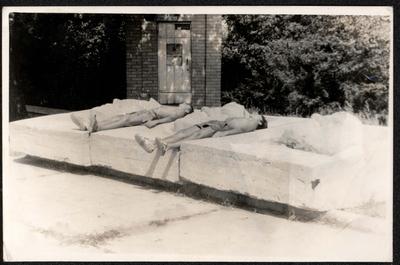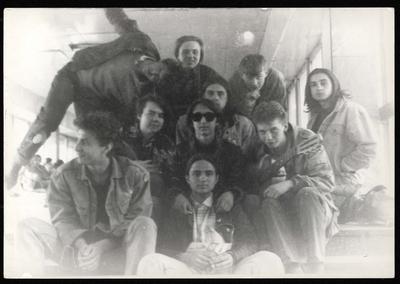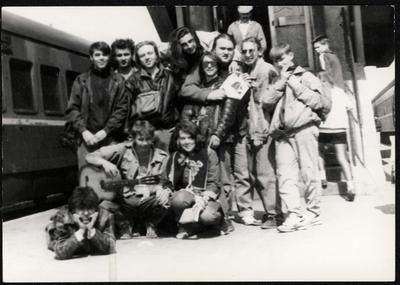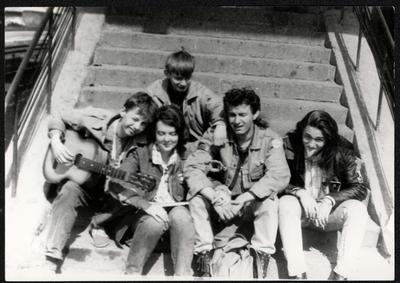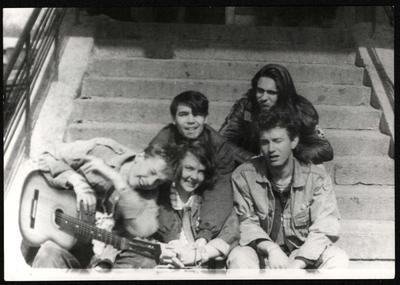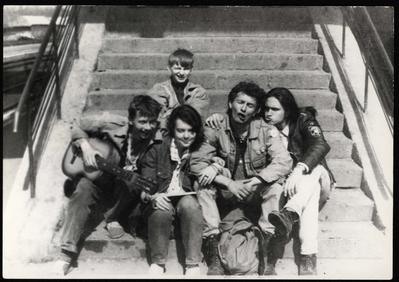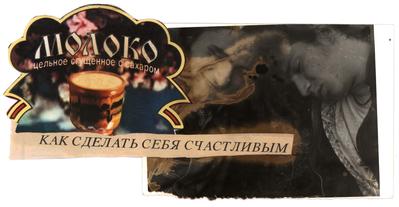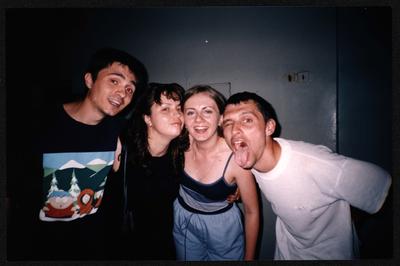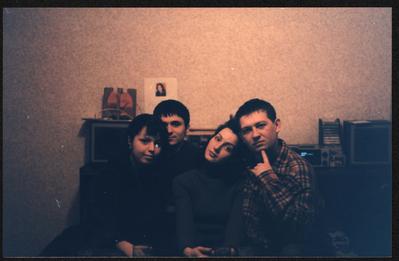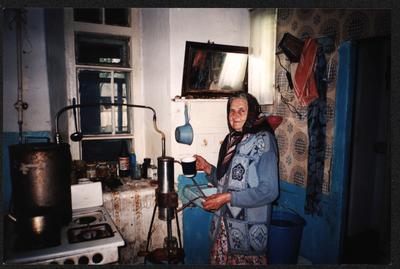Kost Bialik
These photos show the life of Sloviansk's informal environment in the 1990s.
They were collected by Kost Bialik (b. 1974), one of the members of this community. In 2020, he created a Facebook group that publishes information about the 1990s, the informal culture and the Sloviansk in-crowd. According to his observations, it invigorates people, engages in discussion and recollection, encourages creativity, because now, unlike in the 1990s, there are more opportunities and tools.
Kost's biography shows the difficulties faced by representatives of the informal culture. He graduated from the Pedagogical Institute but only worked in school for four years. At this time, he led a double life, because he had to hide his participation in concerts, his admiration for alternative music, he had to distinguish the clothes he wanted to wear from the clothes he needed to wear to work.
Therefore, he went to work for the local radio "Beat". Because during the day he needed to "play" the pop music, Kost also had to hit the airwaves in the night-time where he could play jazz, blues, and tell about the Western electronic music. He experimented with the involvement of listeners, invented contests. In the morning, he began to work as a freight loader, and in his spare time he held rehearsals with the group.
Kost Bialik recalls that for young people, informal culture was an area where one could develop their spirituality. People looked for aesthetics there, sought to distinguish it from "street toughs, from the vulgar, from the secondary". Part of this culture is the fascination with music and the playing of musical instruments. But there were no special places in Sloviansk where you could learn to play. Those who had access to higher education institutions learned to play musical instruments there, which were used in performances during the official holidays. They sang and played guitars in parks, in trolleybuses, in suburban trains — because of this they faced the aversion of society. If they performed at concerts, they sought to attract the audience so that it is not be a passive consumer.
In large cities, there was a clear distribution of informalities: punks, hippies, metalheads. When they encountered each other, there could be fights. In small towns, like Sloviansk, there were few such people and they were not divided into groups. External attributes — long hair or, on the contrary, shaved head, pins on clothes, metal jewelry, trinket bracelets — allowed you to recognize "your own" who you would find interesting. However, if a person was not well-read, well-heard, they could not enter the informal environment. Due to the fact that there were few non-mainstreamers, they were friends with each other, ready to defend themselves together against the "street toughs". Disputes with local bandits and "cops" were mostly resolved verbally.
The milieu was united by concerts, joint parties, trips to Donetsk, Kharkiv, Kyiv, to points where they could exchange the vynil records. For example, in Petrivka they would buy books and cassettes. Some people from the crowd also went to St. Petersburg to visit the grave of Viktor Tsoi. There were also contacts with the Congress of Ukrainian Nationalists as an expression of regional nonconformity. Some photos also show trips to cities nearby - Kramatorsk, Druzhkivka, Mykolaivka.
Photos and collages from the collection were created by the participants themselves. The storylines focus on pastimes, trips to concerts. For many photos, characters pose — while fooling around, making faces, hugging, or displaying musical instruments. This allows you to understand the atmosphere that prevailed in the community, and see the characteristic clothes and attributes.
The description uses information from interviews with Iryna Sklokina and Kost Bialik.
